Getting clinicians involved in procurement is a priority for the NHS. But what should their role be precisely? HSJ gathered experts together to hammer it out. By Alison Moore
The need to involve clinicians and nurses in procurement decisions that affect their work and their patients is seen as fundamental by many in the NHS. It can help drive better outcomes for patients and also deliver cost savings.
But getting everyone signed up to this principle is just part of delivering effective engagement. Addressing issues such as how to use clinicians’ involvement efficiently, what parts of the process they need to be involved with, and which clinicians ought to be at the table is the next step.
‘It is untenable to ask someone to use something they don’t have confidence in’
An HSJ roundtable, in association with NHS Supply Chain, looked at these difficult questions and how different organisations are tackling them. The event, chaired by HSJ editor Alastair McLellan, brought together experts in procurement and clinicians from a number of trusts.
Mr McLellan urged the panellists to “keep it pragmatic and practical” so readers would recognise the world they live in and the challenges they face. He stressed that the issue of clinical engagement in procurement had been addressed several times at HSJ events and this time he was keen to drill down and get the details of how it could work. What particular groups of clinicians ought to be involved and at what point in the procurement process?
The panel
- Dr Des Breen medical director of the Working Together Programme in South Yorkshire, Mid Yorkshire and North Derbyshire
- Rob Knott national director, NHS Procurement
- Pia Larsen director of procurement and supply chain, University College London Hospitals Foundation Trust
- Alastair McLellan HSJ editor (roundtable chair)
- Dr Keith McNeil chief executive, Cambridge University Hospitals Foundation Trust
- David Pierpoint managing director of customer engagement, NHS Supply Chain
- Mandie Sunderland chief nurse, Pennine Acute Hospitals Trust and member of the NHS Supply Chain customer board
- Gary Welch head of procurement, Oxford University Hospitals Trust
Gary Welch, head of procurement at Oxford University Hospitals Trust, said it was important to have clinicians involved in the process if the organisation was to achieve its aims. He drew comparisons with other industries, such as engineering. “My background is in refining and we would always have engineers involved in the [procurement] process,” he said.
“Maybe we have not done as much of that as we would want to.” However, he highlighted orthopaedics as one area where clinician involvement had developed.
But were there parts of the process where clinicians should not be involved, Mr McLellan asked? Mr Welch said there was often a need to have a team involved throughout the whole process. There was a tendency to keep clinicians away from the financial side of the process because of their perceived links with suppliers. Any process should involve healthcare experts “objectively and transparently”, he said.
- Prevention is a better investment than cure
- Embed person centred care into mainstream health services
- Roundtable: A new charter for integrated care
- Please take part in HSJ’s short survey about procurement
- NHS Supply Chain will donate £1 to Alzheimer’s Research UK for each completed survey
Who needs to be involved?
Rob Knott, national director of procurement at NHS Procurement, said the way to look at this was whether each relevant group of consultants, surgeons or nurses needed to be involved at a specific point in the procurement process, particularly when thinking along a pathway.
As well as saying that clinicians ought to be involved in procurement, he added that how to involve procurement in the clinical pathway needed to be examined. “We should think about it in a very different way,” Mr Knott said. “Everything that touches the patient in any form needs to be clinician led.”
‘Everything that touches the patient in any form needs to be clinican led’
Mr McLellan asked what clinically led meant to the panel - was it effectively a veto on what was purchased or something else? Mr Knott pointed out the links with patient outcomes and the impact that not having the quality and consistency of products would have on these outcomes. Did this, pressed Mr McLellan, mean clinicians’ involvement was around determining specification? Mr Knott said: “I think it has to be, but based on an evidence base presented in such a way that they can debate peer to peer and make a decision.”
Mandie Sunderland, chief nurse at Pennine Acute Hospitals Trust, saw a more fundamental problem: “How do we make getting involved in those decisions sexy for clinicians?”
She said that clinicians in her trust were involved in the procurement process through a consensus group which reviewed the most commonly used items. But the position was different with some more complex equipment where input from specialists was needed.
“But I have been involved in groups where decisions go on forever because people can’t reach a consensus,” she added. Mr McLellan asked who should have the final decision. “For a particular bit of clinical equipment it should be the clinical director,” she said, rather than all surgeons affected.
Essential evidence
Pia Larsen, director of procurement and supply chain at University College London Hospitals Foundation Trust, said she accepted clinicians should be involved, but stressed the importance of an evidence base and that the process had to be unencumbered by people with interests that might affect their decision making. She warned she could see consultants taking decisions that were not necessarily impartial and might be affected by other factors.
“I think there are decisions made based on the fact they are receiving fellowship funding or research and development funding,” she said.
“That is not something that we deem acceptable but it is a fact of the position we are in. There is influence playing into the procurement process.”
‘Influence is playing into the procurement process’
Ms Larsen stressed she was not suggesting anyone was “receiving brown envelopes”, but it was more an issue of getting funding for additional people.
Mr McLellan asked: “In your view, accepting that money effectively debars one from being in an influential position on procurement decisions?”
“I think you could not be the ultimate decision maker,” she replied. “You could contribute to the decision making process.”
Decisions should not be taken by just one person, she said.
Chief executive of Cambridge University Hospitals Foundation Trust Keith McNeil said: “It is untenable to ask someone to use something they don’t have confidence in. We had a saying when I was in the army: always remember that your weapon was made by the lowest bidder.”
The whole patient pathway
He stressed it was important to look at the whole patient experience of delivery of care. Healthcare professionals wanted to see a timely, agile process, not one that could take 6-9 months to conclude. But he said there might be a case for clinicians to be in the background once a decision was made. But he warned against giving clinicians an opportunity to claim they were not involved.
NHS Supply Chain managing director for customer engagement David Pierpoint said it was necessary to support engagement and involvement at all levels, but this needed to be balanced against pace of delivery and the danger of the process stagnating. “It is important to support engagement in the clinical fraternity whilst being very clear about who has accountability for the process,” he said.
“If you look at history as to where procurement has produced the best outcome, a triangulation between the clinical fraternity, the procurement fraternity and the supply fraternity delivers the most optimal outcome.”
Des Breen, medical director of the Working Together Programme which aims to share best practice and a joint procurement approach across trusts in parts of Yorkshire and Derbyshire, said: “We can only involve them if they are going to add value.”
He suggested that procurement spending could be split into the contentious and the non-contentious. But it was also necessary to have a structure for the involvement of staff. He highlighted the use of gloves across the seven trusts in his network - 40,000 staff were potentially users. Mr McLellan questioned whether some of these remarks meant that the involvement of doctors and nurses in procurement only needed to be at the highest level.
‘The more complicated the weapon, the more expert involvement with end users is necessary’
But Dr Breen pointed out there were cases in the procurement of specialist equipment where particular staff would be needed in the process, such as around equipment for laparoscopic surgery.
And, picking up on Dr McNeil’s military analogy, he said: “The more complicated the weapon, the more expert involvement with end users is necessary.” But with some things there may not be the same need to get many people involved, such as with pulp products.
Mr McLellan said he wanted the panellists to think about “how” to get clinical engagement - was it necessary to separate out the high use products from the very specialist products which were likely to be low use and involve fewer staff?
Talking about high use products, Ms Sunderland said when she had worked at the Heart of England Foundation Trust the head of procurement had identified the top 10 high use products within the organisation and brought them to the nursing and midwifery forum. This forum had then been able to make a decision about whether to continue with the existing products or switch to other ones.
“We did not know what the spend was on x, y or z,” she said. “We worked with procurement on what was the best solution. It made it very simple for the procurement guys. They were getting a decision. In one year we identified £780,000 in savings and there was not one single piece of comeback from the clinical areas that the decision we made was not the right one.
“When it comes to bedpans and curtains it is not a life and death situation. We are talking about a product that meets the specification and gives best value.”
Mr Welch said there was a range of approaches trusts had used with high volume products. Some had adopted a process like Heart of England had, while others had not. He welcomed the idea of “acceptable products” that met the needs of clinicians. “The ideal position is to have a group of acceptable products that we can do something with,” he said.
David Pierpoint on getting all teams involved
The challenge has been set to the NHS to reduce levels of potential risk of harm to patients while also generating major efficiencies year on year. For this challenge to be met, taking the time to look at how we can all improve the way in which clinical products and equipment are purchased is essential.
For improvements to be realised and maintained, clinical and nursing teams have to see the value of getting involved with procurement initiatives.
In our work across the NHS, teams regularly share their good practices, such as the current collaborative procurement programmes being undertaken by both the Working Together Programme and the Shelford Group.
So the question is how can these examples of good practice be identified and shared more readily across the NHS?
HSJ set up this roundtable, inviting leading clinical, nursing and procurement professionals to share their learning and experience in getting the right people involved in key purchasing decisions to achieve the best outcome for NHS patients, staff and trusts.
Topics covered included how best to:
- get consensus on the outcomes you are trying to achieve for your patients, not just in terms of quality but total cost and productivity – the rest should follow;
- make collaborations work: who needs to be engaged and how to overcome some of the barriers along the way;
- gain full agreement and commitment to the product categories to be focused on and the approach to be taken; and
- agree who needs to be involved with the process and when.
We hope you find this special report as useful as we have, as we continue to develop our national, regional and local programmes to support the delivery of £150m cash releasing savings for the NHS through our contract.
David Pierpoint is managing director of customer engagement
Need for options
Ms Larsen added: “Having the ability to have a group of users who say these 3-4 products are acceptable and fit for purpose allows us to go to the market and leverage that. Going to the market with only one option is not good.”
Ms Sunderland said pulp products were tested during this process, and there was also facilities and infection control input into decisions.
“Is the challenge now how do we stop wanting to reinvent the wheel every time?” asked Mr Pierpoint. “How does the great work done in Heart of England Foundation Trust or Pennine Acute Trust become acceptable in a small district general hospital? How do we accelerate it by taking the work we have done and applying it in a different environment without having to go through the whole process again?”
Ms Sunderland said there was a need for consensus around the best products which were value for money. The public expected this to happen, she said.
Mr McLellan questioned when trusts would accept the outcome of a process carried out by another organisation. For example, would Heart of England accept what had been decided at University Hospitals Birmingham Foundation Trust?
Ms Sunderland said: “I think things are changing and there is more sharing across trusts because we don’t have to reinvent the wheel. We get a lot of clinical staff who move between trusts and may have used three different products, for example.
“I would go further and say there should be a national core range for things like pulp products, syringes and so on… it’s best value for the NHS.”
Dr Breen said that working as a collaborative can make things easier for individual organisations. For example, they could assume that any products will have been evaluated by one or more of the trusts so they do not need to go through that process themselves.
Mr Welch added: “Certainly in the Shelford Group [which represents the 10 biggest academic teaching hospital trusts in the English NHS] we take the view that if it is great for Cambridge, it is good for Oxford.
‘I would go further and say there should be a national core range for things like pulp products, syringes and so on’
“But I think things have changed in the last few years.” He said the Nuffield Orthopaedic Centre - part of Oxford University Hospitals Trust - now had a single knee implant supplier and a single hip implant supplier. Five years ago they would not have thought that was possible.
So, asked Mr McLellan, was the problem with high use products effectively fixed? “Is it just a matter of feeding through the system or are there still specific barriers?”
Dr McNeil said: “There is an issue with junior staff moving between different hospitals and having to familiarise themselves with different equipment.”
There might be opportunities to standardise at least some of these, such as cannulas and drug charts, he suggested.
Ms Larsen added her trust operated triangulation processes around procurement. “There’s a danger if you make decisions with just clinical or just procurement, you don’t get the right balance.”
There was a need to bring in the financial element and take it to the supplier market, she said. “We have to involve the financial aspects - we can’t get away from them.”
Mr McLellan asked whether with the less contentious end of the high volume market we were increasingly seeing harmonisation across trusts.
Ms Larsen replied: “We are not there yet, we are at the early stages but I think it’s definitely the way forward.”
Barriers to collaboration
Mr McLellan asked what were the remaining barriers to making these decisions across the powerful trusts in London. Ms Larsen said: “I don’t think there is the infrastructure. Where is the incentive to collaborate? Collaboration relies on collaboration between people.”
Mr Pierpoint added: “What has made the Shelford Group and the Working Together Programme successful is a three stage approach. There is the initial stage of getting a shared strategic alignment - whether it is the alignment of the 10 largest teaching hospitals or a regional group. Then there is how you build the governance around it and then the process you follow.
“The challenge we have of bringing that together across a broader group of trusts is what is the glue that is holding these people together?”
He added that the Shelford Group was creating something that was driving change throughout the market and this could be replicated elsewhere. There is a real aspiration for the whole of the NHS to have a “shared intent” around procurement but it needed to take steps towards this before it could get better collaboration.
Ms Sunderland said the NHS had to capitalise on standardisation and there might be some products where a choice of two or three could be offered to users. “I have been involved in so many untoward incidents that have been user error because people were unfamiliar with that piece of kit.”
In extreme cases, there was equipment that, if used wrongly, could result in fatalities.
Dr Breen said: “We have to have the desire of all the chief executives and all the medical directors to collaborate - that is easier said than done.”
When asked why this did not always happen and how problems could be overcome, he said: “There is an element of ‘this has been tried before and has not worked’. There’s an element of ‘we get so far down the process and people have pulled out’. There are anxieties about change.”
‘We have to have the desire of all the chief executives and medical directors to collaborate - that is easier said than done’
But now there were more financial constraints which could affect attitudes to collaboration. “I think the other key thing in successful collaboration is to have some sort of independent management office overseeing it. Otherwise the chief executives and medical directors are trying to do it as well as their day job and that tends not to be successful.”
But what about those procurement decisions that involved low volumes of specialist equipment and where expert input was important?
Dr McNeil suggested it came down to “hard evidence about clinical safety and efficiency” which should be used. He suggested there was plenty of evidence around the numerous different types of hip and knee implants where both costs and practices varied.
“It is people looking at what the hard evidence is. People can’t get away with in private what they get away with in the NHS. We namby pamby people and they say they want to spit the dummy out if we don’t give it to them.”
He also warned about the effect of very clever marketing by companies. He said the organisation had to be clear about what it was facing in terms of cost pressures so doctors could see what their role was in terms of the cost pressures they would put on the organisations by their decisions, such as using the most expensive hip and knee joints resulting in money having to come from somewhere else.
Mr McLellan said: “Does that involve you and the medical director sitting in a room saying this is the evidence, we are clinically qualified people and we think you should be using these hip and knee joints?”
Dr McNeil said: “It is about engagement. This is where doctor engagement comes to the fore, making them feel they are part of the decision making process.”
His trust was reorganising clinical directorates to reflect pathways. This meant they were increasingly looking at total costs along pathways.
But he stressed the importance of looking at all desired outcomes including cost but also readmission and infection rates. When they looked at these, conversations started to follow, he said. They might end up with one or two products that were satisfactory on both costs and performance. He said it was an ongoing conversation.
“It is about change. We get them to see the imperative. We are trying to open up the evidence and our new IT system will help us enormously.”
Democratise information
Mr McLellan asked whether there was a case for democratising the information so that a wider range of people could understand the issues.
Ms Larsen said they could get to a point where this information could be presented while Dr McNeil said that was a conversation his trust was increasingly having across clinical groups.
Mr McLellan asked what were the proper rules around how a medical expert should and should not work alongside a supplier. Mr Pierpoint argued clinical data and transparency of such information were important. Mr Welch said he used a graph which showed which orthopaedic implants were likely to results in a loss for the trust and which would not. “This started conversations around changing clinical practices.”
Mr McLellan suggested that suppliers sometimes wanted to have discussions with clinicians “on the side” but Ms Larsen warned that this could mean the whole pathway impact of procurement might not be examined.
Dr McNeil said: “I can’t believe any commercial company would spend that amount on representatives if one person talking to one representative would have the same effect.”
Ms Larsen said there was an “expectation” that there would be discussions between clinicians and suppliers.
‘What are the proper rules around how a medical expert should and should not work alongside a supplier?’
Mr McLellan said there was a school of thought that expected procurement to “save” the NHS a potential £10bn which would ease the pressure. So what could be done to accelerate change in both high use and specialist areas? “We have talked about baby steps but sometimes there is a pressing need to do things faster. How do we accelerate some of the things that we have talked about? How fast should we go?”
Mr Knott said he spent time in the US looking at what some larger hospital groups there were doing. In some cases this involved using one procurement team across 200-300 hospitals. They could achieve 90 per cent compliance [in using products] within 10 days across these hospitals. There was clinical engagement, often involving a chief nursing officer whose decision would be accepted by other clinicians, and clinical advisory groups to support the procurement process.
“But sitting behind it is a very resilient infrastructure,” he said. “When suppliers try to undermine it, they can’t so they don’t bother.”
The chief executive got all the metrics on procurement and the spending was massive - currently £1bn a year on consumables. Also, purchasing organisations actually employed clinicians to influence clinical networks and keep compliance high.
Evidence based systems
The system was evidence based with a set of clinicians driving it forward and making sure it was fit for purpose. But he added it was important to keep a market with a number of suppliers for each item. But sometimes it turned out there was one factory making a product for different suppliers. But how can change come about - should it be by government order or by the NHS organising itself into different groups? Mr Knott suggested that it need not be the Department of Health, it could be collaboration between trusts or a different organisation.
But Dr McNeil asked: “How do we secure enough clinical input to make these processes better?”
He said there were many specialist advisers within NHS England who might be used. But Ms Larsen said that it was no mean feat for some staff to have a conversation with a consultant. “When you are staring down the barrel of the eyes of a consultant physician being able to have a conversation is quite a skill.”
Heads of procurement might be able to do this but that might not be the case for other procurement staff.
Mr Pierpoint spoke of the difficulties in getting people to move from localised to national agendas. “I believe it has to be demand led. We have to get the stakeholders engaged in the process and to support the change: without this, localism will prevail for too long.”
‘We have to get stakeholders engaged in the process’
Dr McNeil said: “It is about how we influence people and get them to pull or push systems.” No one was engaged with the national IT scheme but with procurement he did not sense there were barriers that could not be overcome if everyone was aligned. Procurement savings offered the chance to free up capital and resources.
Ms Larsen said: “The difficulty is we have politicians saying we need more nurses and clinicians. We need to have the infrastructure in place to help them do their jobs.”
But there was a reluctance to invest in back office functions, even if it would help frontline staff do their job better. “If we are talking about engaging people it is about making it real for them,” said Ms Sunderland. But it could be difficult to get people together in a room to make decisions.
She said this could be done by methods such as relating savings from standardisation to how many nurses could be employed using the savings. Peer examples were also very important and could involve a wide variety of people - she pointed out that sometimes it was the scrub nurses in theatre who made the decisions on what products were used.
Ms Sunderland pointed to a national initiative which the Royal College of Nursing and NHS Supply Chain were working on together to challenge nurses to make savings through better procurement.
Mr Pierpoint mentioned a traffic light system used by some trusts which was helping staff think about the cost effectiveness of the products they were using and which he said was very powerful.
- Please take part in HSJ’s short survey about procurement
- NHS Supply Chain will donate £1 to Alzheimer’s Research UK for each completed survey
Clinical engagement roundtable: Take the doctors shopping

What role should clinicians have in procurement?
 Currently
reading
Currently
reading
Clinical engagement roundtable: Take the doctors shopping
- 2

























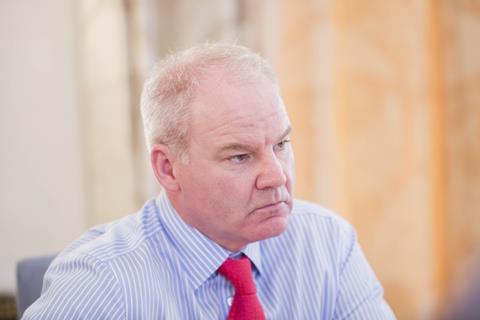
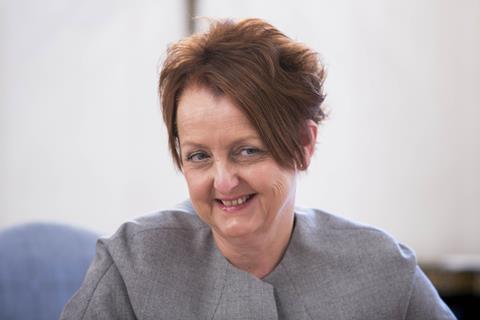


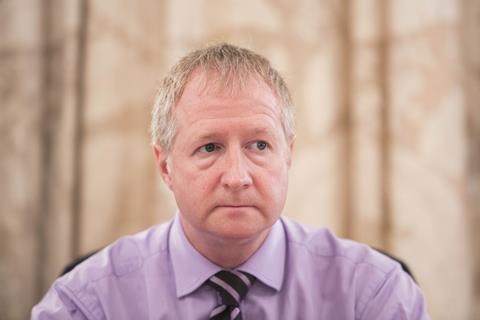
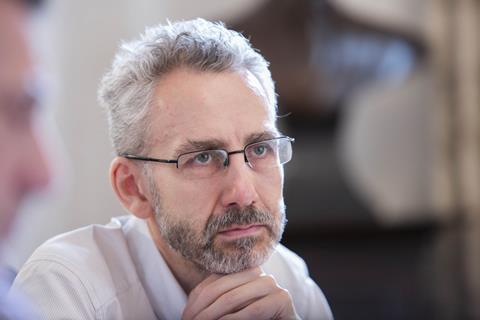
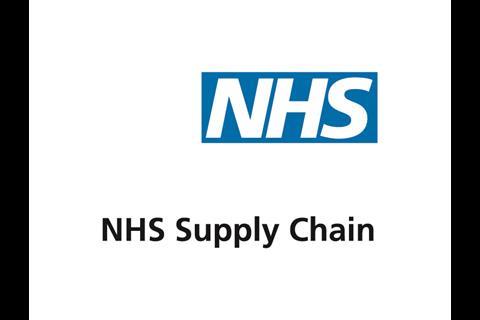







No comments yet